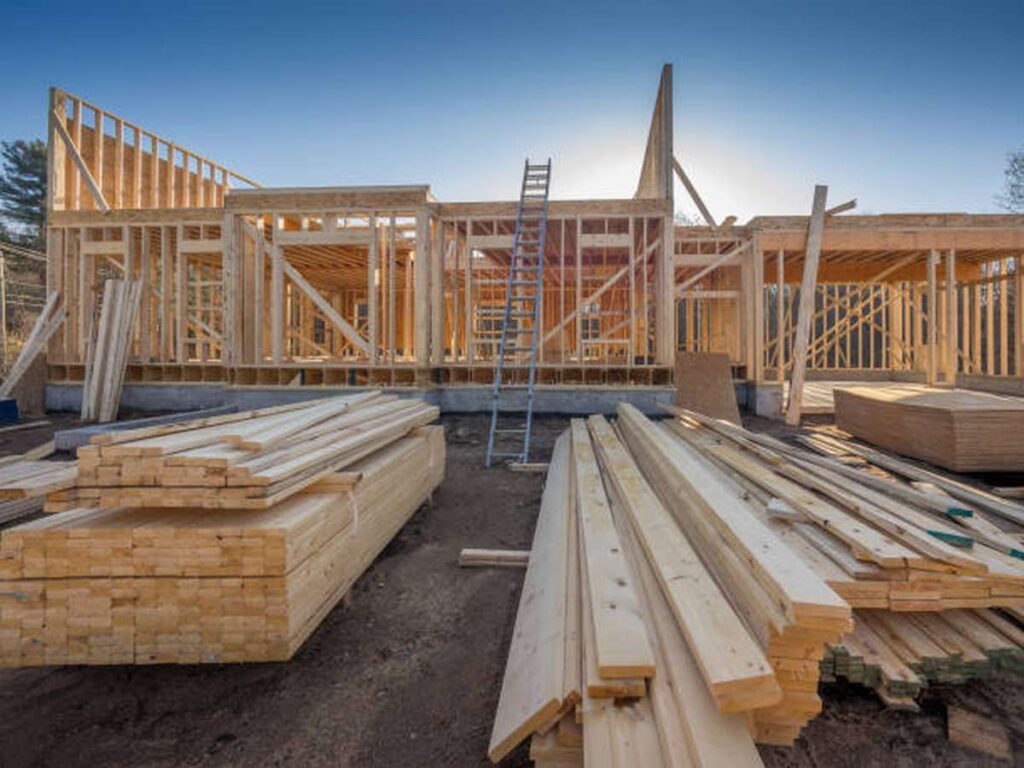Have you been trying to decide between a log cabin and a timber frame home? It can be confusing to differentiate between these two common house types.
Understanding the differences between log homes & timber frame houses is crucial because both provide a comfortable living environment.
This article will compare log homes with timber frame homes to help you decide which type of house is right for you.
The Distinction Between Log And Timber Houses
The time to start planning the purchase and construction of the log and timber home is now. When do you begin? Become comfortable with the idea of wood first. The foundation of these dwellings is wood, both in the form of logs and hewn timbers. These aren't architectural styles in the same sense that, say, a Cape Cod house is, or a bungalow, or a rambler, a ranch house, a Craftsman house, a Georgian house, or a Federal house, or a Tudor house, or a Victorian house, or a McMansion.
Size and form are the defining characteristics of such dwellings. Construction methods and materials distinguish log and timber houses from other types. Certainly, log & timber homes can take on numerous styles while still being easily recognisable as being built from log or timber. Log and timber houses are considered custom residences since they are designed and constructed specifically for the owner.
Items universal to all custom homes include design, finance, purchasing property, locating a company to supply your building materials, and locating a contractor. Big timbers, in particular, give log & timber-frame homes their distinctive appearance and character.
Buyers often get sidetracked looking for the finest option for their log or timber home due to the sheer variety within the industry and so many businesses creating them in different ways. That's understandable, considering that most people haven't seen anything like these houses before, especially not the numerous permutations on the big-timber motif.
Paralysis by analysis is a common result of worrying about making a mistake.Yet, most decisions regarding log and timber homes boil down to concerns of personal preference rather than determining what is best or appropriate. The outcomes of certain decisions will depend on the outcomes of others.
In most cases, the type of wood used and the process by which individual logs and timber components are manufactured and assembled are determined by the firm you choose. You should seek a business that caters to your specific needs and preferences.
That's the whole point of building a house out of wood. If you don't like the wood or how the firm does business, locate another company.
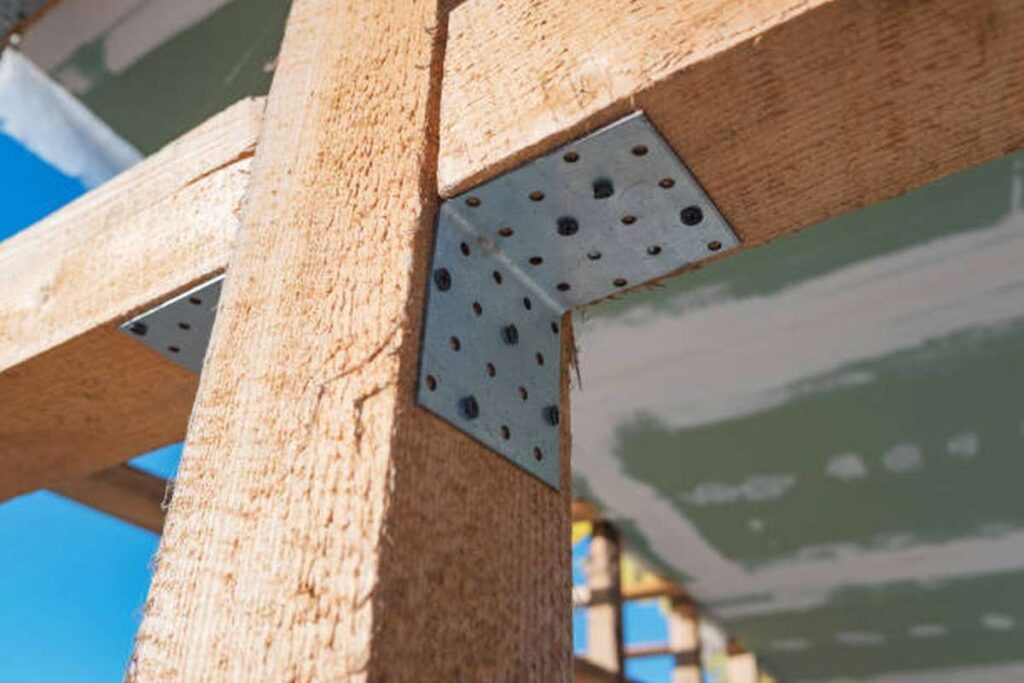
What Exactly Is A Log Home?
Log cabins have been an emblem of the American frontiers and several U.S. presidents, more notably Abraham Lincoln, for many years. They appear in films, on TV, and in print advertisements. You would probably be able to tell a log home apart from a hundred other houses if it was the only kind shown. Nonetheless, not every log house looks the same.
The walls of a log home are formed by horizontally stacking logs; the exterior and interior of the structure share the same log. Outside corners are a common kind of decoration on log home walls. When two walls meet, they create what is known as corners. Intersecting, overlapping, and interlocking corners are the three most common forms.
Once upon a time, chinking was used to seal the space along the logs of a home that was only supported at the corners. Chinking quickly became another distinguishing element of log structures. Chinking is still used in some dwellings for aesthetic and weatherproofing purposes, even though practically all wall logs are now supported along their whole horizontal surface.
What Exactly Is A Timber-Frame House?
Timber framing is one type of post-and-beam building. Post-and-beam construction uses a skeleton-like framework of upright posts and horizontal beams of massive timber. The weight of the house is distributed evenly across this interconnecting structure and eventually reaches the foundation.
Timber framing is a subset of post-and-beam construction in which mortise-and-tenon joinery and wooden pegs are used instead of nails.
Chamfering, pendants, and other ornamental decorations adorn the frame. The frame's interlocking design ensures spacious rooms and, if desired, soaring ceilings by removing the requirement for load-bearing interior walls.
It is also uncommon for the exterior of a timber home to reveal any of the woodwork found inside. This makes it easier for them to blend in with the neighbourhood than wood homes. Timber framing is indeed a centuries-old art form, but traditional timber-frame houses have nothing in common with modern, airy structures with soaring ceilings and open floor plans.
Until modern balloon framing, which needed minimal skill to build and respond to the increasing demands for hurriedly produced mass housing, timber frame homes have been the predominant building technology colonies.
The Significant Differences
Sign Your Name Here (required) Email (mandatory) (required) Website How the wood is used is the direct contrast between log homes & timber homes. They end up looking very different as a result.
And log homes tend to be recognised as such. Although interior less log may be apparent, timber homes might employ various outside materials with no relationship with the interior. Thus, they might not be recognisable as timber homes. Log cabins tend to be horizontal in profile, while timber structures tend to be vertical. These inclinations originate from the post-and-beam frame's construction, in which logs are set horizontally.
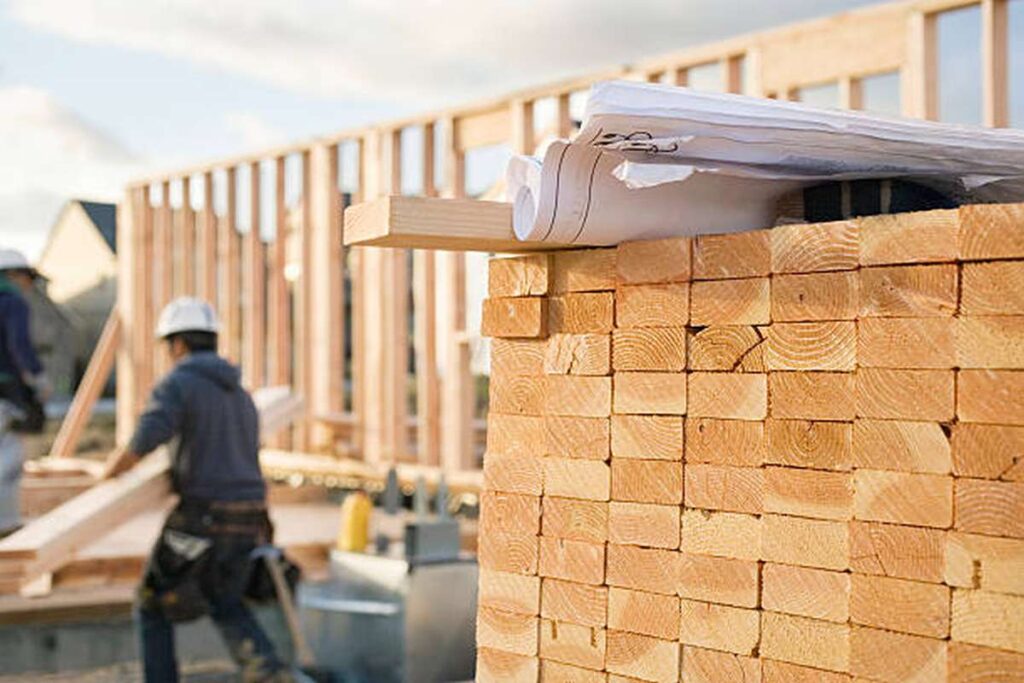
The Similarities
Despite their obvious differences, timber & log homes share many design features. Here are some of their most striking parallels.
- In both cases, the houses are planned and built specifically for the buyer, then shipped to them unassembled.
- Both are built on a foundation of massive timbers (either round or square) that have been expertly and even artistically fitted together.
- Both saw great success in early America but faded into obscurity till the mid-1970s when they underwent a renaissance and subsequent boom.
- Large rooms, open floor plans, cathedral ceilings, walls or windows with spectacular vistas, roof trusses, fireplaces, and a rustic look or at least a laid-back vibe are all hallmarks of these homes.
- They provide a wide selection of fashions.
- Buying land and constructing one is essentially the same approach. Create a floor plan for your house. Location prep. Construction of a dwelling.
- Embellish and garden. Pursue your passion.
- Both need relocating to new, often rural and even distant (albeit less constrained by modern standards, such as timber houses) environments. Buyers should consider the pros and cons of relocating to these areas carefully, as they are unfamiliar to them.
- Both are impulsive buys driven purely by a person's desire to fulfil an internal need for the house.
When it comes down to it, the primary reason why most individuals opt for a log or timber house is aesthetic. The appearance of the building seems to be its preeminent appeal. It invokes emotional interest, even if the quality of building materials or craftsmanship may play a substantial role (surely it influences the cost/value). If you're serious about buying one of these houses, interior design should be your top priority.
The Advantages And Disadvantages Of Timber Frame Log Houses
There are many options to consider once you've settled on building a bespoke home. It's necessary to know what kind of custom home you want to create, but finding the finest builder is also crucial. One of the most well-liked architectural trends currently is the timber frame log home.
Timber frame log homes are similar to post and beam homes in that you can enjoy the aesthetic benefits of wood and timber without having to construct the complete house from logs. Post & beam construction uses rounded logs for a more natural & rustic look, while wood frame uses square logs.
Three Advantages Of Timber Frame Log Homes:
The Idea Of Openness And Strength
The open-concept house has become increasingly fashionable over the past decade. These houses typically feature large kitchens with views into the living room. Due to the strength of the timbers, a wood frame house can have fewer load-bearing walls, which results in a more spacious interior. Because of its strength, endurance, and beauty, this form of the frame has been utilised for centuries, particularly in older churches.
Waste And The Environment
Using an entire log in a wood frame construction results in less waste than conventional framing with dimensional lumber. While constructing a traditional house, lumber is first felled in the forest, then transported to a mill where it is cut to size, then sent to a distributor, and finally to a building supply store, where it is chopped again before it can be used.
The timber used in timber frame construction requires significantly less handling, resulting in cost savings. As the logs arrive at the site, they are sized to fit, and any necessary alterations are done with as little waste as possible.
Aesthetics
A custom-built log home allows you to choose whether the framing logs are concealed or exposed. Each custom wood frame home has its distinct look and feel because of the natural beauty and durability of the timbers used in its construction. With an open layout and fewer load-bearing walls, you have greater options for window and door placement.
- There are other advantages to timber-framed log homes as well.
- Living in a home made primarily of wood has been linked to improved physical and mental well-being.
- Speed! Timber-frame homes of "average" size can be dismantled, transported, and reconstructed in the same amount of time.
- Timber frames insulated with insulated concrete panels (SIPs) are more durable and cost-effective in maintaining temperature than their fibreglass counterparts.
- Timber frame buildings are more adaptable because of their floor plans' flexibility, thanks to the reduced number of load-bearing walls.
- Timber frame log homes have a smaller ecological footprint since they often employ sustainable materials and less wood in their construction. Recycling and locally sourced wood is an option, and any remaining lumber scraps can be reused.
Three Disadvantages Of A Timber Frame Log House
There are drawbacks to building a timber frame home, but there are drawbacks to every kind of construction.
Pest Vulnerability
Timber frames can get attacked by pests like termites, woodworms, and carpenter ants, just like any other type of house can. If you keep up with regular cleaning and maintenance, you can keep costly repairs at bay.
Vulnerability To Natural Factors
Weathering from the sun, fire, and water can weaken and even burn timber frame logs homes to the ground. To prevent this, ensure your home's outdoor wood is covered by appropriate overhangs.
Ensure snow, water drainage, and trees and plants are kept well away from the house. Every spring and fall, take a quick stroll around your log cabin to inspect and look for any potential problem areas. This will allow you to detect them in time, repair them, and prevent any long-term harm.
Wooden Shrinkage Or Swelling
Timber frame log homes are susceptible to swelling, shrinking, and shifting if not properly sealed or finished since the wood will naturally absorb water. If you hire an experienced log and wood builder, they will know to account for the logs' potential to contract, twist, or move and will take the necessary safeguards to keep your home's integrity intact.
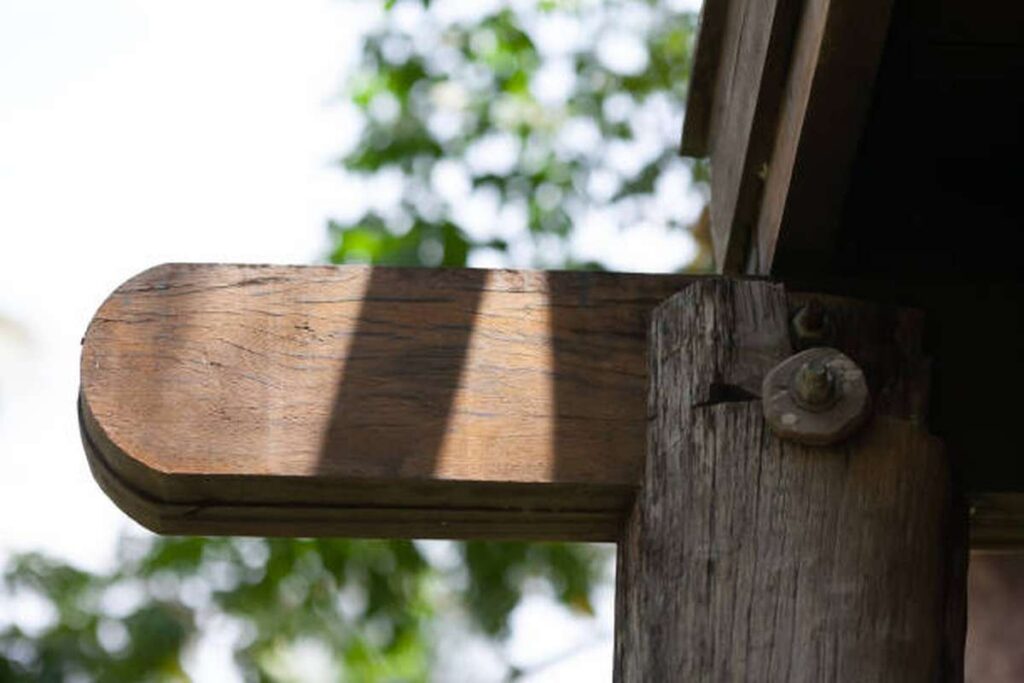
Conclusion
This article will compare log homes with timber frame homes to help you decide which type of house is right for you. Log and timber homes are custom residences since they are designed and constructed specifically for the owner. Big timbers, in particular, give log & timber-frame homes their distinctive appearance and character. Buyers often get sidetracked looking for the finest option for their log or timber home due to the sheer variety within the industry and so many businesses creating them in different ways. Most decisions regarding log and timber homes boil down to concerns of personal preference rather than determining what is best or appropriate.
The type of wood used and the process by which individual logs and timber components are manufactured and assembled are determined by the firm you choose. The most important details in this text are the differences between log homes and timber-frame houses. Log homes are formed by horizontally stacking logs, while timber-frame houses use a skeleton-like framework of upright posts and horizontal beams of massive timber. Timber framing is a subset of post-and-beam construction in which mortise-and-tenon joinery and wooden pegs are used instead of nails. It is uncommon for the exterior of a timber home to reveal any of the woodwork found inside, making it easier for them to blend in with the neighbourhood than wood homes.
Timber framing is a centuries-old art form, but traditional timber-frame houses have nothing in common with modern, airy structures with soaring ceilings and open floor plans. Timber frame homes have been the predominant building technology colonies until modern balloon framing, which needed minimal skill to build and respond to the increasing demands for hurriedly produced mass housing. Despite their obvious differences, timber & log homes share many design features, such as large rooms, open floor plans, cathedral ceilings, walls or windows with spectacular vistas, roof trusses, fireplaces, and a rustic look or at least a laid-back vibe. Both houses are built on a foundation of massive timbers (either round or square) that have been expertly and artistically fitted together. Both saw great success in early America but faded into obscurity until the mid-1970s when they underwent a renaissance and subsequent boom.
Buyers should consider the pros and cons of relocating to these areas carefully, as they are unfamiliar to them. Both are impulsive buys driven purely by a person's desire to fulfil an internal need for the house. The most important details in this text are the advantages and disadvantages of timber frame log homes. Timber frame log homes are similar to post and beam homes in that they can enjoy the aesthetic benefits of wood and timber without having to construct the complete house from logs. Advantages of timber frame log homes include the idea of openness and strength, as well as less waste than conventional framing with dimensional lumber.
Additionally, timber used in timber frame construction requires significantly less handling, resulting in cost savings. Additionally, timber used in timber frame construction requires significantly less handling, resulting in cost savings. Timber frame log homes have a distinct look and feel due to the natural beauty and durability of the timbers used in their construction. They are also more adaptable due to their floor plans' flexibility, and have a smaller ecological footprint. However, there are drawbacks to building a timber frame home, such as pest vulnerability, weathering from the sun, fire, and water, and wooden shrinkage/swelling if not properly sealed or finished. To prevent these issues, it is important to keep up with regular cleaning and maintenance, and hire an experienced log and wood builder to take the necessary safeguards to keep the home's integrity intact.
Content Summary:
- Have you been trying to decide between a log cabin and a timber frame home?
- It can be confusing to differentiate between these two common house types.
- Understanding the differences between log homes & timber frame houses is crucial because both provide a comfortable living environment.
- This article will compare log homes with timber frame homes to help you decide which type of house is right for you.
- The time to start planning the purchase and construction of the log and timber home is now.
- Become comfortable with the idea of wood first.
- The foundation of these dwellings is wood, both in the form of logs and hewn timbers.
- These aren't architectural styles in the same sense that, say, a Cape Cod house is, or a bungalow, or a rambler, a ranch house, a Craftsman house, a Georgian house, or a Federal house, or a Tudor house, or a Victorian house, or a McMansion.
- Size and form are the defining characteristics of such dwellings.
- Construction methods and materials distinguish log and timber houses from other types.
- Certainly, log & timber homes can take on numerous styles while still being easily recognisable as being built from log or timber.
- Log and timber houses are considered custom residences since they are designed and constructed specifically for the owner.
- Items universal to all custom homes include design, finance, purchasing property, locating a company to supply your building materials, and locating a contractor.
- Big timbers, in particular, give log & timber-frame homes their distinctive appearance and character.
- Buyers often get sidetracked looking for the finest option for their log or timber home due to the sheer variety within the industry and so many businesses creating them in different ways.
- That's understandable, considering that most people haven't seen anything like these houses before, especially not the numerous permutations on the big-timber motif.
- Paralysis by analysis is a common result of worrying about making a mistake.
- Yet, most decisions regarding log and timber homes boil down to concerns of personal preference rather than determining what is best or appropriate.
- The outcomes of certain decisions will depend on the outcomes of others.
- That's the whole point of building a house out of wood.
- If you don't like the wood or how the firm does business, locate another company.
- Log cabins have been an emblem of the American frontiers and several U.S. presidents, more notably Abraham Lincoln, for many years.
- They appear in films, on TV, and in print advertisements.
- You would probably be able to tell a log home apart from a hundred other houses if it was the only kind shown.
- Nonetheless, not every log house looks the same.
- The walls of a log home are formed by horizontally stacking logs; the exterior and interior of the structure share the same log.
- Outside corners are a common kind of decoration on log home walls.
- When two walls meet, they create what is known as corners.
- Intersecting, overlapping, and interlocking corners are the three most common forms.
- Once upon a time, chinking was used to seal the space along the logs of a home that was only supported at the corners.
- Chinking quickly became another distinguishing element of log structures.
- Chinking is still used in some dwellings for aesthetic and weatherproofing purposes, even though practically all wall logs are now supported along their whole horizontal surface.
- Timber framing is one type of post-and-beam building.
- Post-and-beam construction uses a skeleton-like framework of upright posts and horizontal beams of massive timber.
- The weight of the house is distributed evenly across this interconnecting structure and eventually reaches the foundation.
- Timber framing is a subset of post-and-beam construction in which mortise-and-tenon joinery and wooden pegs are used instead of nails.
- Chamfering, pendants, and other ornamental decorations adorn the frame.
- The frame's interlocking design ensures spacious rooms and, if desired, soaring ceilings by removing the requirement for load-bearing interior walls.
- It is also uncommon for the exterior of a timber home to reveal any of the woodwork found inside.
- This makes it easier for them to blend in with the neighbourhood than wood homes.
- Until modern balloon framing, which needed minimal skill to build and respond to the increasing demands for hurriedly produced mass housing, timber frame homes have been the predominant building technology colonies.
- How the wood is used is the direct contrast between log homes & timber homes.
- They end up looking very different as a result.
- And log homes tend to be recognised as such.
- Although interior less log may be apparent, timber homes might employ various outside materials with no relationship with the interior.
- Thus, they might not be recognisable as timber homes.
- Log cabins tend to be horizontal in profile, while timber structures tend to be vertical.
- These inclinations originate from the post-and-beam frame's construction, in which logs are set horizontally.
- Despite their obvious differences, timber & log homes share many design features.
- Here are some of their most striking parallels.
- In both cases, the houses are planned and built specifically for the buyer, then shipped to them unassembled.
- Both are built on a foundation of massive timbers (either round or square) that have been expertly and even artistically fitted together.
- Both saw great success in early America but faded into obscurity till the mid-1970s when they underwent a renaissance and subsequent boom.
- Large rooms, open floor plans, cathedral ceilings, walls or windows with spectacular vistas, roof trusses, fireplaces, and a rustic look or at least a laid-back vibe are all hallmarks of these homes.
- They provide a wide selection of fashions.
- Buying land and constructing one is essentially the same approach.
- Both need relocating to new, often rural and even distant (albeit less constrained by modern standards, such as timber houses) environments.
- Buyers should consider the pros and cons of relocating to these areas carefully, as they are unfamiliar to them.
- Both are impulsive buys driven purely by a person's desire to fulfil an internal need for the house.
- When it comes down to it, the primary reason why most individuals opt for a log or timber house is aesthetic.
- The appearance of the building seems to be its preeminent appeal.
- It invokes emotional interest, even if the quality of building materials or craftsmanship may play a substantial role (surely it influences the cost/value).
- If you're serious about buying one of these houses, interior design should be your top priority.
- There are many options to consider once you've settled on building a bespoke home.
- It's necessary to know what kind of custom home you want to create, but finding the finest builder is also crucial.
- One of the most well-liked architectural trends currently is the timber frame log home.
- Timber frame log homes are similar to post and beam homes in that you can enjoy the aesthetic benefits of wood and timber without having to construct the complete house from logs.
- Post & beam construction uses rounded logs for a more natural & rustic look, while wood frame uses square logs.
- The open-concept house has become increasingly fashionable over the past decade.
- These houses typically feature large kitchens with views into the living room.
- Due to the strength of the timbers, a wood frame house can have fewer load-bearing walls, which results in a more spacious interior.
- Because of its strength, endurance, and beauty, this form of the frame has been utilised for centuries, particularly in older churches.
- Using an entire log in a wood frame construction results in less waste than conventional framing with dimensional lumber.
- While constructing a traditional house, lumber is first felled in the forest, then transported to a mill where it is cut to size, then sent to a distributor, and finally to a building supply store, where it is chopped again before it can be used.
- The timber used in timber frame construction requires significantly less handling, resulting in cost savings.
- As the logs arrive at the site, they are sized to fit, and any necessary alterations are done with as little waste as possible.
- A custom-built log home allows you to choose whether the framing logs are concealed or exposed.
- Each custom wood frame home has its distinct look and feel because of the natural beauty and durability of the timbers used in its construction.
- With an open layout and fewer load-bearing walls, you have greater options for window and door placement.
- There are other advantages to timber-framed log homes as well.
- Living in a home made primarily of wood has been linked to improved physical and mental well-being.
- Timber-frame homes of "average" size can be dismantled, transported, and reconstructed in the same amount of time.
- Timber frames insulated with insulated concrete panels (SIPs) are more durable and cost-effective in maintaining temperature than their fibreglass counterparts.
- Timber frame buildings are more adaptable because of their floor plans' flexibility, thanks to the reduced number of load-bearing walls.
- Timber frame log homes have a smaller ecological footprint since they often employ sustainable materials and less wood in their construction.
- Recycling and locally sourced wood is an option, and any remaining lumber scraps can be reused.
- There are drawbacks to building a timber frame home, but there are drawbacks to every kind of construction.
- Timber frames can get attacked by pests like termites, woodworms, and carpenter ants, just like any other type of house can.
- If you keep up with regular cleaning and maintenance, you can keep costly repairs at bay.
- Weathering from the sun, fire, and water can weaken and even burn timber frame logs homes to the ground.
- To prevent this, ensure your home's outdoor wood is covered by appropriate overhangs.
- Ensure snow, water drainage, and trees and plants are kept well away from the house.
- Every spring and fall, take a quick stroll around your log cabin to inspect and look for any potential problem areas.
- This will allow you to detect them in time, repair them, and prevent any long-term harm.
- Timber frame log homes are susceptible to swelling, shrinking, and shifting if not properly sealed or finished since the wood will naturally absorb water.
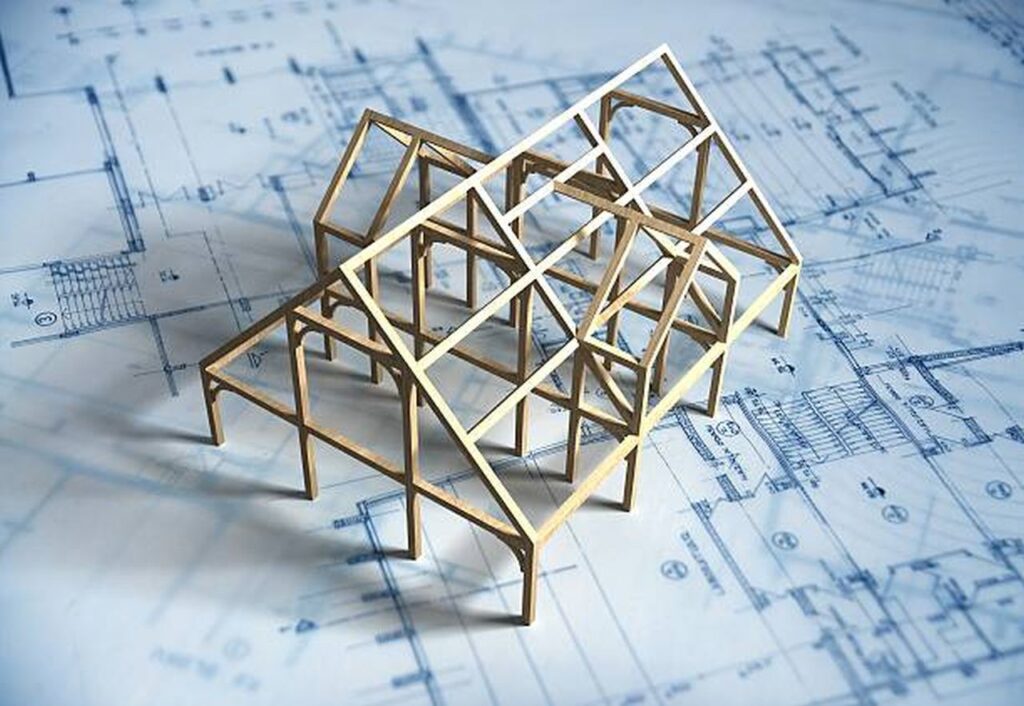
Frequently Asked Questions About Log Homes And Timber Homes
What is the difference between log and timber?
A log is a massive piece of raw timber cut from tree trunks. On the other hand, timbers for timber construction are fashioned by precisely chopping logs into desired forms. Logs come in a wide variety of shapes since trees are not homogeneous in their shapes.
What are the three main categories of wood?
Timber can be categorised into three broad categories: structural, finishing, and decorative.
Is a timber house good?
Because of timber's durability, you may rest assured that your home will stand the test of time. Timber framing, being a natural insulator, is ideal for the Australian environment, as it will help to maintain your home at a comfortable temperature year-round.
Which wood is best for building a house?
- Oak is the top choice for a timber frame. Oak is widely used because it is the strongest and hardest timber option, making it ideal for use in timber frames in modern construction.
- Pine. Pine is a highly durable softwood that also has a high degree of adaptability.
- Cedar.
- The Douglas Fir.

